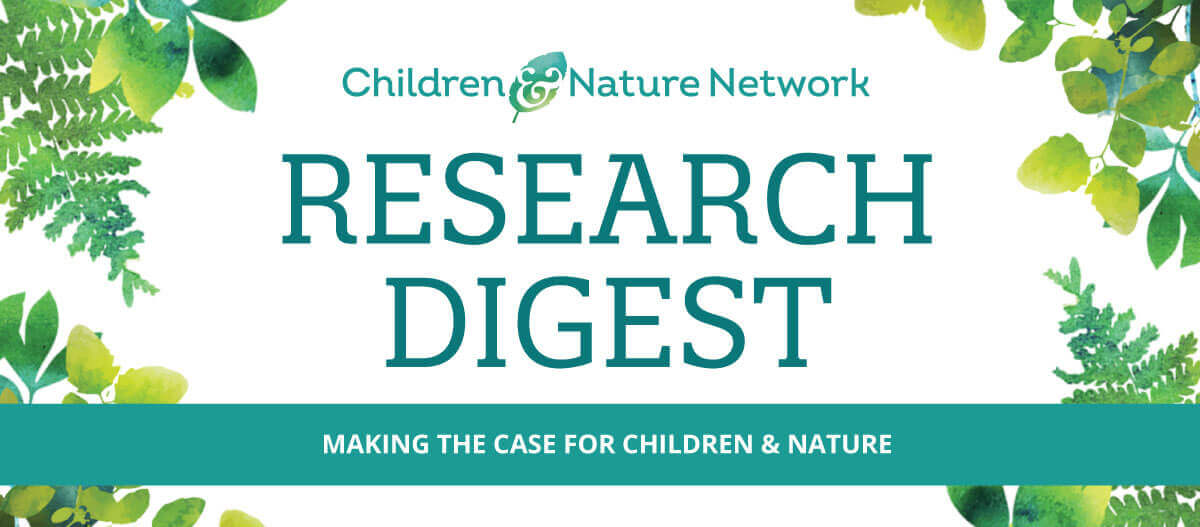Nature and Children’s Spirituality
Connection to nature has been identified as one of the domains of spirituality. Connections with nature – or nature engagement – can also be a pathway to spirituality. A child encountering the beauty and wonder of nature may experience awe and feelings of joy. Such encounters – or spiritual moments – can foster perspective taking, enhanced social connections, life satisfaction, and a sense of well-being.
Awe-inspiring encounters with nature can foster prosocial behaviors
Awe is sometimes referred to as a “self-transcendent” or spiritual experience in that it shifts attention away from self and makes us feel a part of something greater than ourselves. This brief review of the literature discusses ways in which awe-inspiring encounters with nature can promote greater orientation to others and increased sensitivity to the needs of others. Selected studies also found that awe and perceptions of beauty in nature can foster perspective taking and enhanced social connections.
Goldy & Piff, 2020. Toward a social ecology of prosociality: Why, when, and where nature enhances social connection.
Access Study
Engagement with nature through sensory experiences may help a young child develop a felt sense of God
This theoretical article proposes that an attachment to nature may be a pathway for young children to develop a felt sense of God. This premise draws from the concept of attachment theory, which usually refers to how infants become emotionally attached to the significant people in their world. The author proposes that engagement with nature through sensory experiences helps a young child develop attachments that expand beyond humans to include animals, places, and nature.
Christian, 2020. Attachment, nature, and the young child’s felt sense of God.
Access Study
Spirituality is associated with children’s and adolescents’ well-being
Over a thousand children and youth in Zambia completed a survey which included assessments of happiness, life satisfaction, religiosity, and spirituality. The spirituality assessment was based on the nature domain of spirituality which focuses on an individual’s connectedness to nature. Spirituality, as measured by the nature domain, was shown to be a strong predictor of children’s life satisfaction and a moderate predictor of adolescents’ happiness and life satisfaction.
Holder et al. 2016. Well-being’s relation to religiosity and spirituality in children and adolescents in Zambia.
Access Study
Early childhood teachers share a variety of ideas on how to intentionally support children’s spirituality
Thirty-three early childhood educators in the U.S. completed surveys addressing their perceptions and practices about nurturing spirituality in secular early childhood settings. Their responses revealed a substantial overlap between developmentally appropriate practice and activities they used to nurture children’s spirituality. Their responses also reflected an understanding of how nature engagement can support children’s spiritual development.
Mata-McMahon, Haslip & Schein, 2018. Early childhood educators’ perceptions of nurturing spirituality in secular settings.
Access Study
Early childhood educators describe children’s spirituality as multi-layered, including building connections, practicing values and making meaning
Early childhood educators’ responses to a survey about children’s spirituality revealed eight salient concepts: connections (including connections with nature), practicing virtues, making meaning, God and religion, self-awareness, mindfulness and presence, humanness, and inner feelings (including wonder, awe and reverence for the natural world). Educators viewed children’s spirituality as relating to both the inner and outer life of the child and as more of a “heart” strength than a “mind” strength.
Mata-McMahon, Haslip & Schein, 2020. Connections, virtues, and meaning-making: How early childhood educators describe children’s spirituality.
Access Study
Cross-national study finds a strong association between adolescent mental health and all four domains of spiritual health
Initial analysis of information collected from 28,000 adolescents in three different countries showed strong and consistent associations between positive mental health and higher scores in all four dimensions of spiritual health: connections to self, others, nature, and the transcendent. Further analysis indicated that associations between connections of “others,” “nature” and the “transcendent” to mental health may be mediated through connections to “self.”
Michaelson et al. 2019. Domains of spirituality and their associations with positive mental health: A study of adolescents in Canada, England and Scotland.
Access Study
Childhood nature experiences enhance care for self and others and contribute to spiritual development
This qualitative study explored young children’s spiritual development, and the role of nature-based experiences in that spiritual development, as interpreted by 12 experts in the field of early childhood education. Reflections on how nature inspires a sense of awe – which in turn leads to a sense of spirituality – were often mentioned by the experts. Also noted was the understanding that spirituality is strengthened and deepened through repeated interactions with nature.
Schein, 2014. Nature’s role in children’s spiritual development.
Access Study
A newly-developed instrument measures the spiritual component of an individual’s relationship with nature
This study involved the development of an instrument to measure an individual’s ecospirituality, or reverential respect for the environment. Five dimensions of ecospirituality were identified and used to frame the instrument. These five dimensions are dwelling, caring, revering, experiencing, and relating. Further research found this scale to be a valid and reliable instrument for measuring the spiritual component of one’s relationship with nature.
Suganthi, 2019. Ecospirituality: A scale to measure an individual’s reverential respect for the environment.
Access Study





